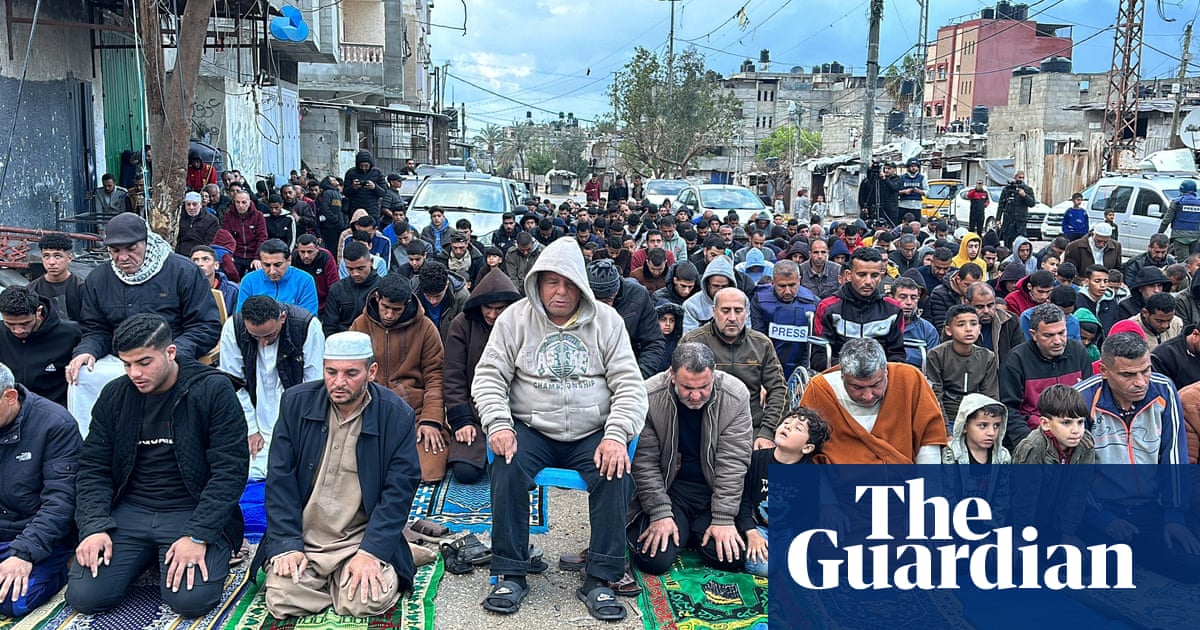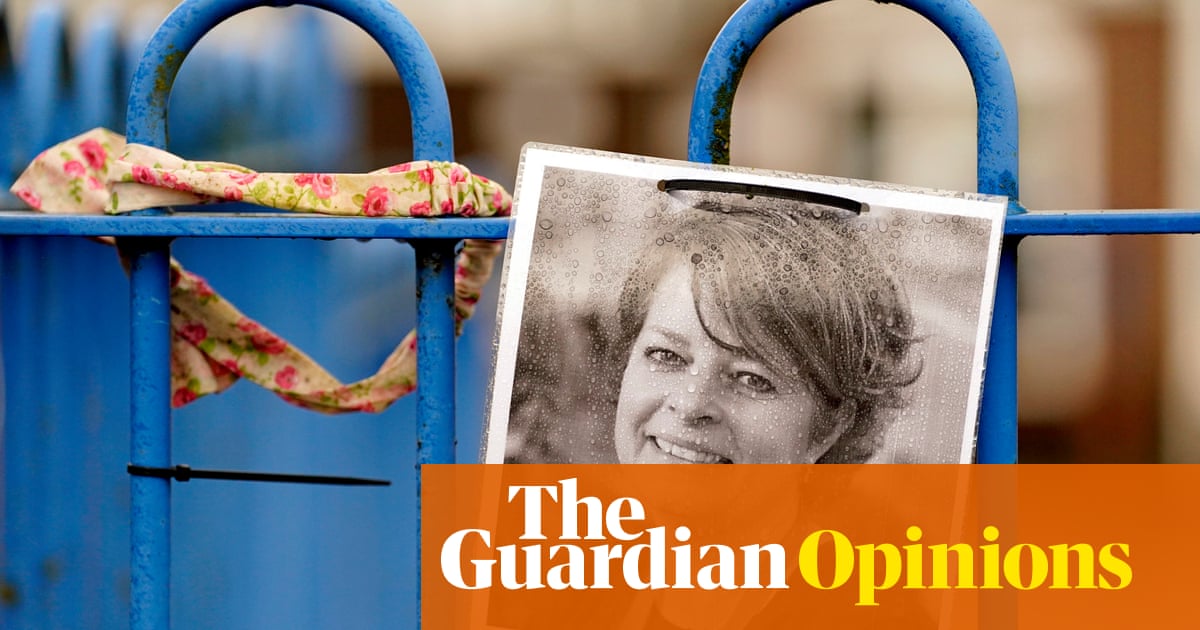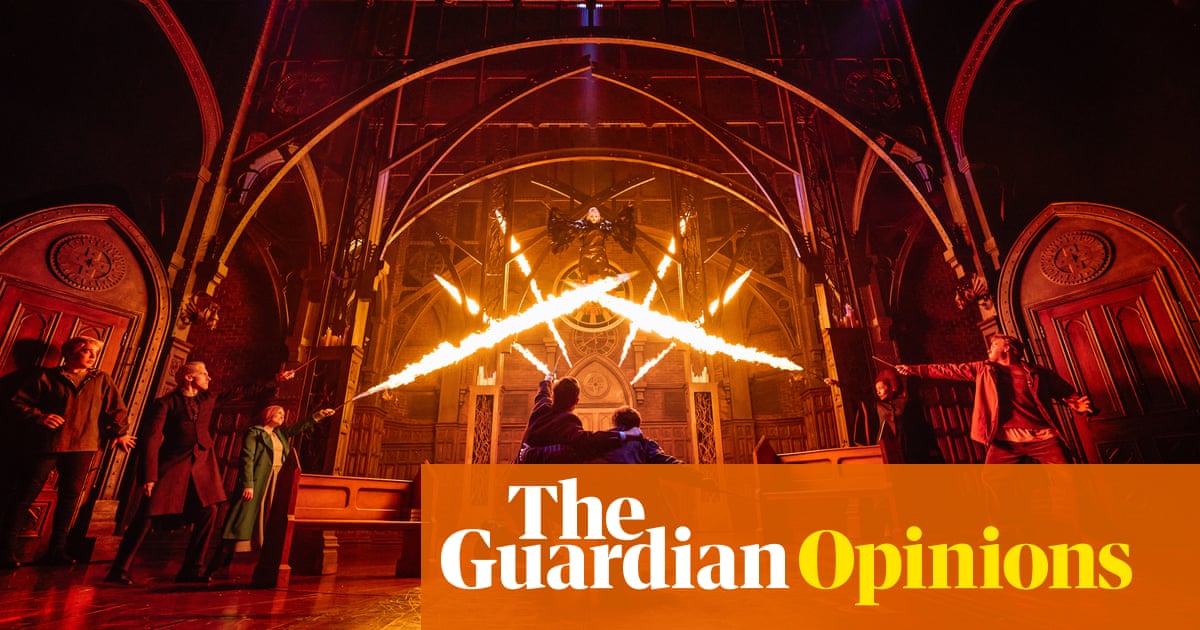
There are many magical things about the Harry Potter film series, which marks its 20th anniversary this month with a re-release of Harry Potter and the Philosopher’s Stone. Perhaps the most miraculous one, though, is that its three stars – Daniel Radcliffe, Emma Watson and Rupert Grint – are still alive, apparently content, and not noticeably addicted to class A drugs.
Each continued acting, occasionally even starring in bona fide hits: Radcliffe in The Woman in Black; Watson, who is also a UN women goodwill ambassador, in Beauty and the Beast. Grint, star of the M Night Shyamalan series Servant, also became a father last year – his partner is another former child actor, Georgia Groome of Angus, Thongs and Perfect Snogging – and celebrated by joining Instagram. Even there, he has shown a characteristic level-headedness by posting a mere six times in 11 months.
Their post-Potter lives could so easily have been different. When they were introduced to the world at a press conference in August 2000, it was hard not to dread what might lay in store for them. Would they end up suing their parents, as Corey Feldman and Jena Malone had done? Would they come to resent the whole sorry circus surrounding their newfound celebrity, like Henry Thomas (ET) and Wil Wheaton (Stand By Me)? Would they head off the rails and into rehab like Drew Barrymore, or have their lives cut short like River Phoenix and Corey Haim?
As the flashbulbs popped that day, it was left to Chris Columbus, director of the first two instalments, to express “a need to protect these kids against what can eventually go wrong if you star in a film of this magnitude.”
He would know. After all, he directed the biggest child stars of the previous decade: Macaulay Culkin, who was nine when he shot Home Alone, and Mara Wilson, just six during the making of Mrs Doubtfire. Both are now synonymous with the trauma and turbulence that can befall a child actor. Culkin became embroiled in legal disputes with his parents. “I was just a machine,” he said in 2000. “I had been wanting to stop since I was about 11.” Wilson, later the star of Matilda, felt washed-up before she hit adolescence, and came to resent her success. “It felt very out of control to have everybody know my name,” she says in the recent HBO documentary Showbiz Kids. “I didn’t feel like I could trust anybody. And that’s still a problem I have now.”
The life of a child star was never any kind of picnic. In the silent era, children were placed in hazardous situations on set. “There was a belief in Hollywood that children were rubber, they were flexible,” said the one-time toddler superstar Diana Serra Cary. “We were flexible. But not willingly.” Cary, who died last year, began her screen career a whole century earlier as Baby Peggy, marketed as “The cutest kid in the world.” She had signed a $1m-per-picture deal when she was barely able to write her own name. By the age of six, her star was waning. Her folks blew most of her earnings, while her place in Hollywood was eventually taken by new-kid-on-the-block Shirley Temple.
When Jackie Coogan, star of Charlie Chaplin’s 1921 film The Kid, discovered his mother and stepfather had squandered his fortune, he sued them. Though he did poorly out of the case, it resulted in the implementation in 1939 of the California child actors bill, commonly known as the Coogan law. But the exploitation and abuse of children did not end there. Young performers were routinely fed drugs to maintain their energy levels or to keep them pacified; Judy Garland and Mickey Rooney were among the most notorious victims.
The dangers of the child actor’s life had still not been eradicated. In a helicopter accident on the set of Twilight Zone: The Movie in 1982, seven-year-old Myca Dinh Le and six-year-old Renee Shin-Yi Chen were among those killed; the director, John Landis, had violated child labour laws by hiring them. In 2005, Sarah Polley wrote to the film-maker Terry Gilliam explaining how unsafe she had felt on the set of The Adventures of Baron Munchausen. She called her experience “one of the most traumatic things that happened to me as a child”. Gilliam responded by saying he ran a safe set.
Few former child stars have spoken out as openly or as angrily as Corey Feldman, who alleges that he was sexually abused, along with his late friend and Lost Boys co-star Haim, by powerful men in the industry. His accusations form part of the 2014 documentary An Open Secret, the memoir Coreyography and his own self-financed documentary, My Truth: The Rape of 2 Coreys. Yet despite those revelations, and the allegations made by the actor Anthony Rapp (who claims to have faced unwanted sexual advances from Kevin Spacey at 14, allegations which Spacey denies), the scandal of child abuse in Hollywood still seems frustratingly short of a defining moment comparable to the downfall of Harvey Weinstein.
“After a while, it starts to become: ‘Well, who can take the most abuse?’” says Evan Rachel Wood, another former child star, in Showbiz Kids. “Somebody’s waiting in line to take your place so you just start to allow yourself to be abused … Until things change, there’s always going to be someone willing to take abuse and stay quiet.”
Perhaps the ideal child acting experience was the one undergone by Ellar Coltrane, the star of Boyhood. Coltrane was shielded from the detrimental effects of premature celebrity by that film’s unusual 12-year production schedule: he shot footage every year, but was already an adult by the time audiences saw it. He got to be a child actor without the burden of handling his fame while still a child.
One scene in Boyhood shows him queueing at a midnight publication party for the latest Harry Potter book. Unlike Coltrane, the stars of that franchise did their growing up in public. Of the three, Radcliffe is the only one who has admitted to any wobbles along the way. In 2019, he confessed to using alcohol to cope with the pressure. “In my case, the quickest way of forgetting about the fact that you were being watched was to get very drunk,” he said. It took him “a few years and a couple of attempts” to sober up. “When I think of the sort of chaos I used to invite into my life, I’m really much happier now.”
The Harry Potter kids were lucky to be working in the UK industry, which could never compete in scale or ferocity with the churning, shark-infested waters of Hollywood. (Serious casualties of child stardom are often American, if only because so much film and television is made there.) They were fortunate, too, in being outliers, insulated within those same roles and that protective family-like structure for a full decade, rather than being cast out into the wilderness after one hit movie. No child actor before or since has benefited from greater job security or a sturdier safety net. If Radcliffe, Watson and Grint didn’t make it out relatively unscathed, surely no child ever could.
On the final day of filming on Deathly Hallows Part 2 in 2010, the director David Yates put a lot of thought into how the trio would say goodbye to their characters. “For the very last shot, Dan, Rupert and Emma had to run and jump and throw themselves on to this giant blue mat,” he said. “I thought that’d be a really appropriate way to end it: a leap into the wide blue yonder.” It is fortunate – and rare – that their landing has been a happy one.












